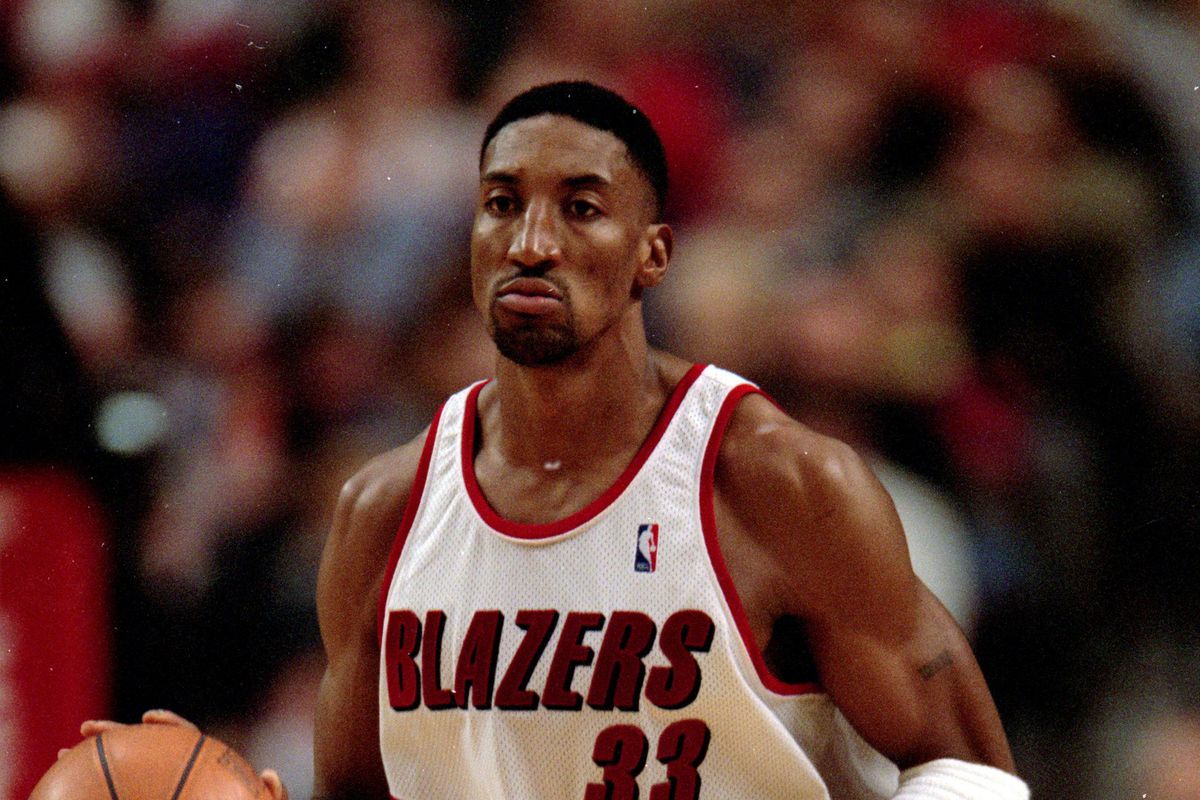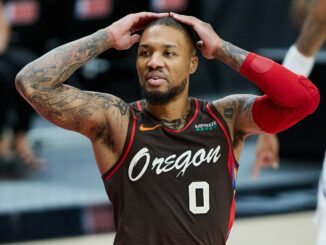
When the Portland Trail Blazers struck a deal with the Denver Nuggets to acquire Jusuf Nurkic, not a lot of people knew the type of player Rip City was getting. Most of the attention was initially given to the first-round draft pick that came to Portland with the center in exchange for Mason Plumlee and a second-round draft pick.
What unfolded next was almost miraculous… Nurkic Fever.
Nurkic was a good player in Denver and was drafted with the 16th pick in the 2014 NBA Draft because of his size and high ceiling. Unfortunately, in Denver, Nurkic was never able to reach his potential, especially after losing his starting spot following the emergence of Nikola Jokic.
One thing that immediately stuck out when Nurkic took the court in Rip City was his ability to pass the ball and fit into a brand new offense.
Looking back on the season, I investigated a bit into how it was possible for Nurkic to fit into coach Terry Stotts’ offense.
Terry Stotts
In 2012 Paul Allen and the Portland Trail Blazers hired Terry Stotts to be the head coach of a middling team that had been mired with injuries and disappointment. Stotts was only a year removed from winning an NBA Championship with the Dallas Mavericks as an assistant coach under Rick Carlisle.
As the Assistant in Dallas, Stotts was known as the architect of their offense. The year that the Mavericks won the championship, the Dallas offense averaged 100.2 points per game, good enough for 11th in the league. That is about as mediocre as it gets. Some of that may be attributed to 17th ranked pace of play. Then I dove further.
That same year, the Mavericks averaged 23.8 assists per game, the best in the NBA.
Stotts’ offense is all about movement, flow, and shooting. When it was at its best in 2011, it was because the ball was moving fast and freely.
A lot of that helps put in context what is going on in Portland the past couple years.
Mason Plumlee
Brooklyn drafted Plumlee in the first round of the 2013 NBA Draft. Unfortunately for Plumlee, he was stuck behind All-Star center Brook Lopez on the depth chart. In Brooklyn, Plumlee averaged 20 minutes per game over 152 games, starting 67 of those.
When Portland traded for Plumlee it was to replace a huge need as its starting center. Even though Plumlee became the everyday starter, he only averaged 26.5 minutes over 136 games in Portland, six more minutes than in Brooklyn.
While every young player develops new skill sets early in their careers, Plumlee had one emerge in Portland that he hadn’t really shown yet.
Below are Plumlee’s stats his last year in Brooklyn and his first year in Portland.
| Team/Year | Minutes per game | Points per game | Rebounds per game | Assists per game |
| Brooklyn/2014-15 | 21.3 | 8.7 | 6.2 | 0.9 |
| Portland/2015-16 | 25.4 | 9.1 | 7.7 | 2.8 |
The marked jump in assists is what immediately stuck out to me. His assists numbers went up 200 percent while his minutes increased only 20 percent.
In the 2016-17, in the 54 games that Plumlee played for Portland, they increased even more, to 4.0 per game.
While Plumlee never developed much of an offensive game, his skills as a passer and playmaker made up for some of his deficiencies as a shooter.
Jusuf Nurkic
The Blazers saw the writing on the wall at the NBA Trade Deadline in February. They knew that they weren’t going to be able to afford Plumlee in free agency and decided to see what they could get for him. The haul was impressive when it netted them Nurkic and a 1st round draft pick.
Nurkic found himself on the bench and unhappy with his situation in Denver. Rumors had started floating around that he was a locker room distraction and a malcontent. Denver was happy to move on and bring in a guy to try out for their backup center position of the future.
Nurkic’s offensive game in Denver largely consisted of rebounds and put-backs, with an occasional breakout double-digit scoring night.
His 2016-17 numbers of his half season in Denver and half season in Portland are below.
| Team/Games | Minutes per game | Points per game | Rebounds per game | Assists per game |
| Denver/45 | 17.9 | 8.0 | 5.8 | 1.3 |
| Portland/20 | 29.2 | 15.2 | 10.4 | 3.2 |
Once again, we saw a young center come into Portland and find himself as a cog of the offense. Nurkic’s ascension is based on a small sample size, but also more impressive overall than that of Plumlee.
When Nurkic was on the court, the whole Blazer team was better. That was expected on the defensive end of the court where Nurkic has the size and athleticism to be a true rim protecting center, but the surprise was on the offensive end of the floor.
In Portland, Nurkic found his midrange shot, was a force in the pick-and-roll, and showed signs of developing as a very good passer. The one footnote on that might be that his turnovers went up at almost the same rate as his assists in Portland. That might show carelessness, or it might show his overall willingness to pass the ball and take a chance.
Moving Forward
There just seems to be something about Coach Stotts and the development of these bigs as passers. It was widely publicized in the summer of 2015 when Blazer big-man coach Kim Hughes was fired. Since that time, the team hasn’t really hired a true big-man coach. Some of this coincides with the time frame of the assist explosion that Blazer bigs have seen.
While Stotts isn’t typically seen as the big-man coach in Portland, he seems to be the one constant.
Stotts said during exit interviews that he was planning to be in Bosnia in August to spend some time with Nurkic and that one or two of his other assistants had trips planned there throughout the summer. The continued development of Nurkic is going to be fun to watch. The expectations in Portland are sky high for the 7-footer from Bosnia.
His development is crucial to the future of the Blazers. This team hasn’t had a center to build around since Arvydas Sabonis. That’s right. Since then the team has had centers like Ruben Boumtje-Boumtje, Jamaal Magloire, Greg Oden, and Marcus Camby. Not to slander any of those guys, but they aren’t necessarily the building blocks that this franchise hopes that Nurkic is.
And while Nurkic may never be a 20-points-per-game type center, if he continues to help facilitate for his teammates, he is going to be a major part of the offense for years to come.




